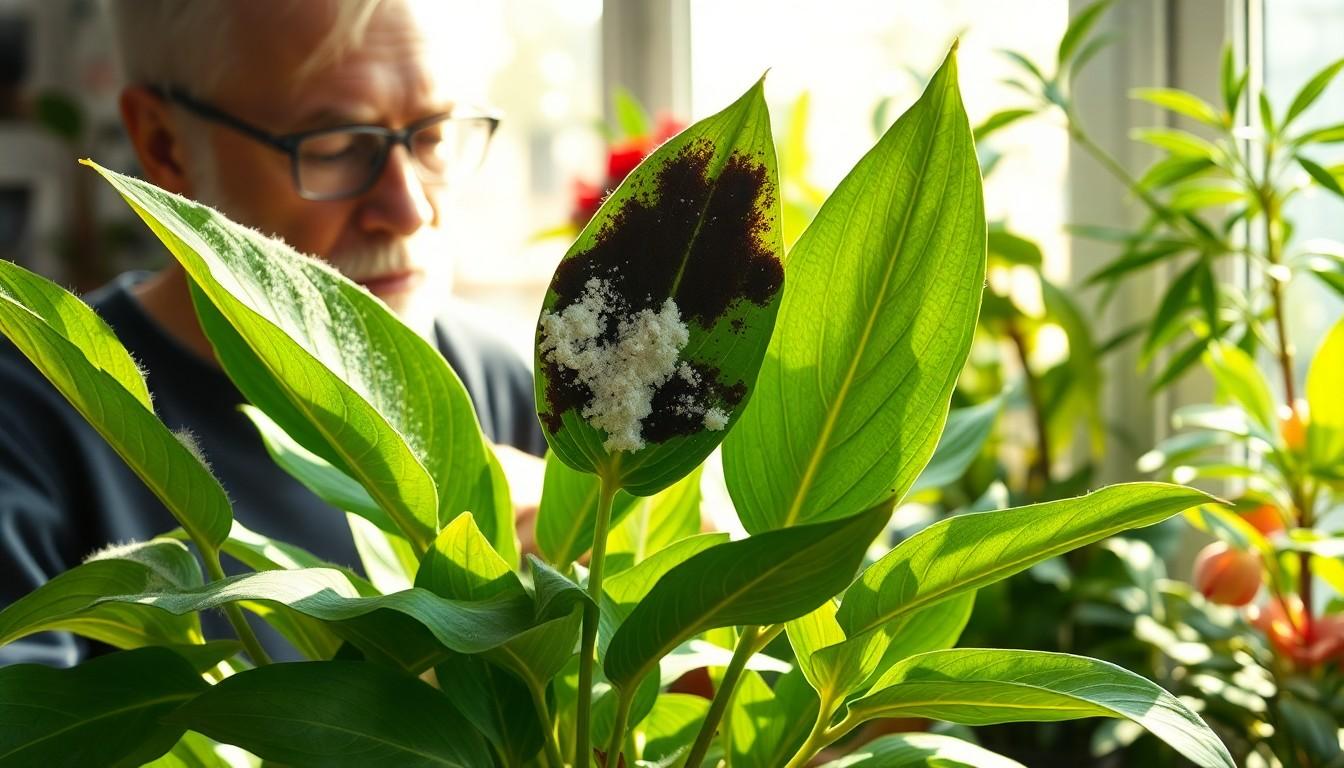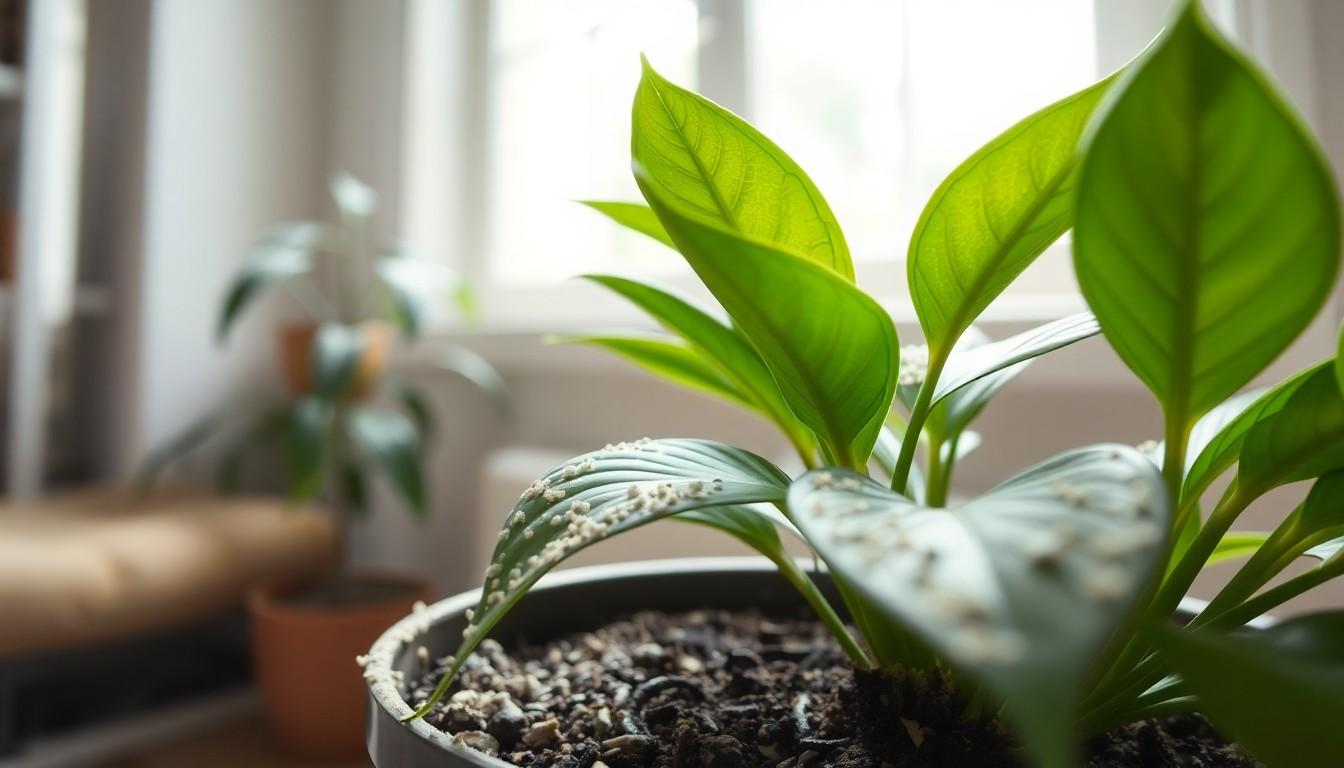The Best Fluffy Pancakes recipe you will fall in love with. Full of tips and tricks to help you make the best pancakes.

Mold in House Plants: Discover How to Identify and Eliminate It Fast
House plants are supposed to bring life and freshness into a home, but what happens when they start sprouting their own little science experiments? Mold can turn your beloved greenery into a fuzzy nightmare. It’s like inviting a party crasher to your plant party, and nobody wants that!
Understanding Mold In House Plants
Mold often appears on house plants, affecting their health and appearance. Identifying mold types and understanding their impact is essential for maintaining a thriving indoor garden.
What Is Mold?
Mold consists of fungi that thrive in damp environments. These organisms reproduce via spores, which can spread easily and contaminate other plants. Mold typically grows on the surface of soil, leaves, or stems, especially in conditions with excess moisture. Poor air circulation and a lack of sunlight contribute to mold development. Recognizing the signs early can help prevent further infestation.
Types Of Mold Commonly Found
Several types of mold can affect house plants, each with distinct characteristics.
- Powdery Mildew: A white, flour-like substance that coats leaves. It inhibits photosynthesis and can lead to stunted growth.
- Fusarium: Often appears as a soft rot on stems and leaves, causing wilting. This mold can damage roots and lead to plant death.
- Botrytis (Gray Mold): Characterized by gray, fuzzy growth on flowers and leaves, particularly in high humidity. It often affects older plants.
- Rhizoctonia: Typically presents as dark brown or black patches, particularly at the base of plants. This mold can result in root rot.
Understanding these molds helps in selecting appropriate treatment methods.
Causes Of Mold In House Plants

Mold in house plants arises due to several environmental factors, impacting plant health significantly. Understanding these causes helps in effective prevention and management.
Overwatering And Poor Drainage
Overwatering frequently leads to mold growth in house plants. Waterlogged soil creates an ideal breeding ground for fungi. The roots may become saturated, restricting oxygen and promoting decay. Inadequate drainage further exacerbates the issue, trapping moisture in pots. Choosing pots with drainage holes and allowing soil to dry between waterings prevents excess moisture accumulation.
High Humidity Levels
High humidity levels contribute to favorable conditions for mold formation. Environments that maintain humidity above 60% create an optimal environment for mold spores to thrive. Even regular misting can inadvertently increase moisture on leaves and soil surface. Reducing humidity through proper ventilation helps maintain a healthier setting for plants. Utilizing dehumidifiers or placing plants in locations with better air circulation curbs excessive moisture.
Inadequate Air Circulation
Inadequate air circulation encourages mold growth on house plants. Stagnant air traps humidity and keeps moisture levels elevated. Fungi capitalize on this environment, proliferating on the soil, leaves, or stems. Arranging plants with sufficient spacing mitigates the risk by promoting airflow. Regularly rotating plants or using fans improves air movement and helps maintain dry surfaces.
Identifying Mold In House Plants
Mold in house plants can lead to significant health issues for both plants and their caretakers. Identifying it early can help maintain healthy growth.
Signs Of Mold Growth
Common indicators of mold growth include a white, powdery substance on leaves, which often signals Powdery Mildew. Dark spots on leaves or stems can suggest the presence of Botrytis or Fusarium. Soil may appear fuzzy or discolored, indicating mold thriving beneath the surface. A musty odor emanating from the soil points to mold proliferation. Noticing these signs early aids in effective treatment and prevention.
Differentiating Between Mold And Other Issues
Differentiating between mold and other plant issues is crucial. Wilting leaves may arise from underwatering, while yellowing typically indicates overwatering rather than mold. Drooping stems can stem from pests or nutrient deficiencies instead of fungal growth. It’s essential to observe patterns; mold typically spreads rapidly, whereas other issues may develop more slowly. Carefully examining affected areas allows for accurate identification and appropriate intervention.
Prevention And Control Measures
Preventing and controlling mold in house plants requires a multifaceted approach. It’s essential to implement strategies that focus on watering techniques, air circulation, and creating an optimal environment.
Proper Watering Techniques
Watering techniques play a crucial role in mold prevention. Allow the soil to dry out between waterings, targeting a soil moisture level that maintains plant health without saturation. Consider using pots with drainage holes to prevent excess water pooling. Inspect pots regularly to ensure they drain effectively. Adjust the frequency of watering based on seasonal needs and plant type, ensuring that watering aligns with individual plant requirements.
Enhancing Air Circulation
Air circulation significantly influences mold growth in house plants. Position plants to provide adequate space between them, which improves airflow around leaves and stems. Opening windows or using fans helps achieve better ventilation in indoor spaces. Avoid clustering plants together since this can trap moisture and create a humid microclimate. Consider rotating plants periodically to expose all sides to airflow and light, further diminishing the chances of mold development.
Creating An Optimal Environment
Creating an optimal environment involves regulating humidity and temperature levels. A humidity level below 60% often discourages mold growth, so using a dehumidifier may be beneficial in particularly damp areas. Maintain consistent temperatures, avoiding extreme fluctuations which can stress plants. Ensure that plants receive sufficient light according to their specific needs, as proper light exposure fosters healthy growth. Regularly cleaning leaves can also remove any mold spores and dust, contributing to an overall healthy environment.
Treatments For Mold In House Plants
Mold in house plants requires prompt treatment to restore their health. Different methods exist for managing this issue effectively.
Natural Remedies
Natural remedies can help combat mold effectively. Neem oil serves as a popular option; it disrupts fungal growth and reduces spores. A solution of water and baking soda also acts as an effective treatment, with a ratio of one tablespoon of baking soda to one quart of water. Spraying this mixture on affected areas can eliminate mold. Cinnamon possesses antifungal properties, so sprinkling it on the soil can deter mold growth. Additionally, a mixture of water and apple cider vinegar can cleanse the leaves and improve plant health. Regularly inspecting plants and applying these natural treatments ensures quick action against mold.
Chemical Fungicides
Chemical fungicides offer a straightforward approach for more severe mold infestations. Commercial fungicides often contain ingredients like chlorothalonil or propiconazole, targeting harmful fungi effectively. It’s essential to follow the manufacturer’s instructions closely for the proper application. Spraying these products on affected foliage promotes healthier plants. Alternatively, systemic fungicides penetrate plants, providing internal treatment against mold. This type of fungicide works well for persistent cases requiring stronger intervention. When using any chemical treatment, ensure adequate ventilation and avoid direct exposure to plants during applications.
Conclusion
Addressing mold in house plants is essential for maintaining their health and beauty. By understanding the types of mold and their effects, plant owners can take proactive measures to prevent growth. Proper watering techniques and improved air circulation play a vital role in creating an environment that discourages mold.
Recognizing the early signs of mold allows for timely intervention, whether through natural remedies or chemical treatments. A well-cared-for indoor garden not only enhances home aesthetics but also contributes to overall well-being. With the right knowledge and practices, anyone can enjoy thriving house plants free from the nuisance of mold.
